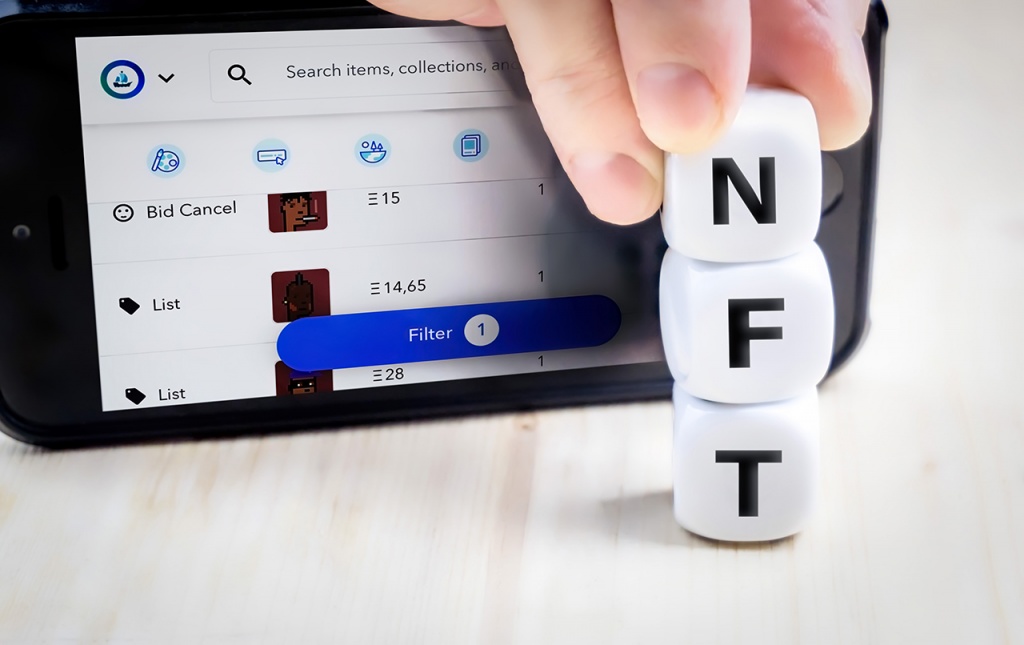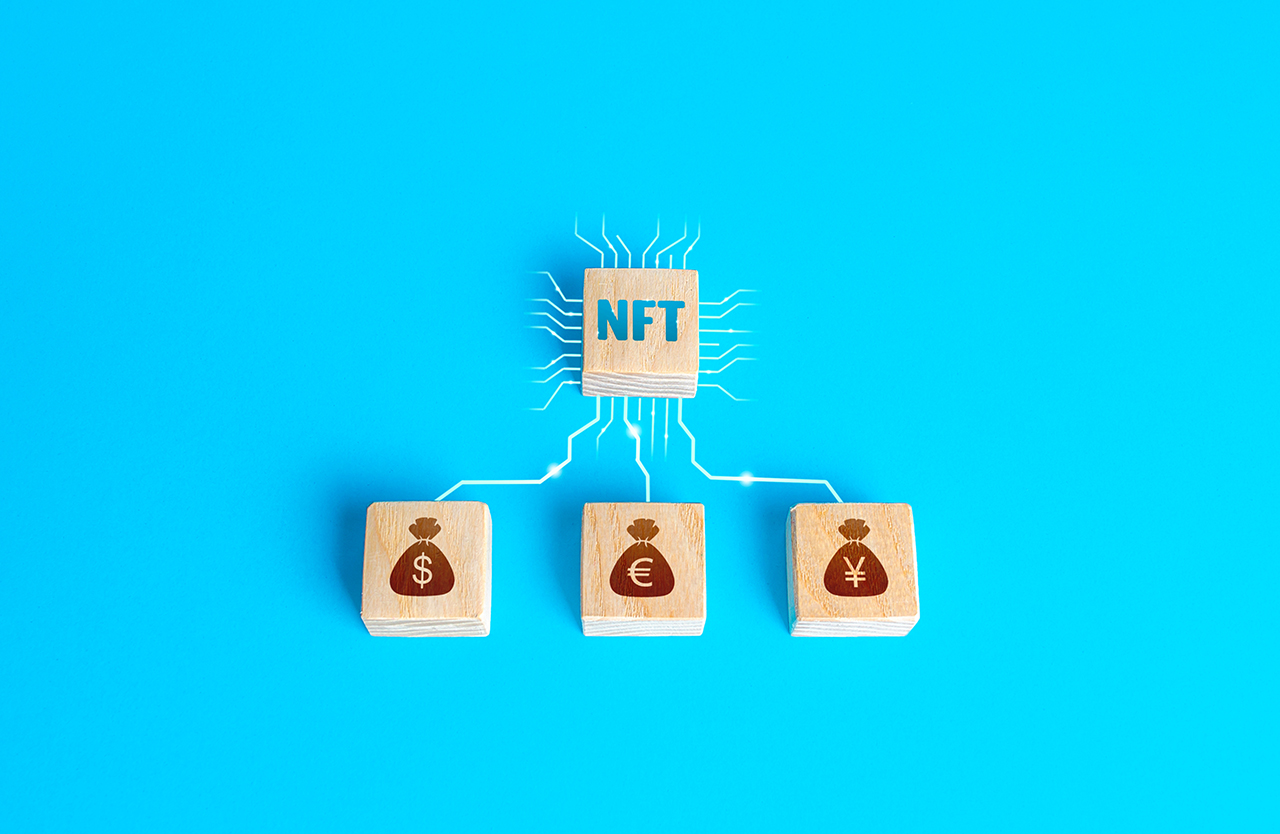In economic and financial terms, non-fungible tokens (NFTs) are referred to as a valuable asset class that cannot be interchanged. The modern digital world, with its increasing focus on crypto trading and digital currencies, has enabled NFTs to continue growing in value. This has also led to a steadily rising demand for non-fungible assets. As a result, many believe that a global paradigm shift is taking place.
During recent years, NFTs have been arguably the most important innovation in finance and tech. In fact, they’re turning into a huge cultural phenomenon, so much so that people can be easily swayed by the hype accompanying the NFT space.
Even though Blockchain (the database that stores NFT info and the network that facilitates crypto trading) is complicated sometimes, NFTs are relatively easier to understand. In fact, they’re fairly simple and getting the hang of them is easier than you think!
If you’re still not sure about them and want to learn more, this detailed guide is just what you need. Read on to find out what NFTs are through clearly articulated concepts and well-structured examples.
NFTs: What Are They?
NFTs, or non-fungible tokens, are a modern digital asset class. Their importance is based on their ability to be non-fungible. Consider this simple scenario…
Someone reaches out to you for a $1 loan. Before lending them the money, you probably wouldn’t ask, “Which bill should I give you?”
That’s because US dollars, or any Fiat currency for that matter, are fungible. This means that the value of the $1 bill you just lent is the same as all other $1 bills in use anywhere in the world. On the other hand, NFTs don’t work this way. They’re non-fungible because no two NFTs have the same value.
Every NFT has a unique asset value. This cannot be replaced or replicated by an identical version because THERE CANNOT BE ANY IDENTICAL VERSIONS!
You can think of an NFT in terms of a digital collectible residing on the Blockchain network. Things like a baseball card, a song, a piece of digital art, an entry ticket, a poem, and so much more can be an NFT. However, unlike the art in your living room or your prized collection of Pokémon cards, NFTs are created (minted) on the Blockchain network. This makes them fully digital, immutable, and trackable.
Relationship Between NFTs & Blockchain
As you already know by now, users create or mint NFTs on a Blockchain setup. When you “mint” something this way, that item and all its attributes will live on the Blockchain forever. Hence, you can buy, sell, gift, or rent an NFT over Blockchain while its value and history will be permanently recorded on the network.
Because of their non-fungible nature, NFTs are ideal for rare pieces of art, antique ornaments, and other types of collectibles. You can easily access their entire paper trail and provenance at any time thanks to the security and reliability afforded by the Blockchain network. Moreover, there’s no danger of any item being torn, damaged, broken, or bent in any way.
Contrary to conventional art marketplaces, the NFT domain offers perpetual secondary sale royalties of 10% or more to the artist. This means that creators can continue profiting from their work as its value increases with time.
With NFTs, you can own a digital asset in a way that you couldn’t in the past. Detractors argue that one can simply take a photo or download a hi-res image of a valuable piece of art. However, that’s like someone taking a picture of a painting and then claiming that they own the piece.
In reality, you may only have a replica in your possession. Nevertheless, to be sure, Blockchain can easily confirm the control and ownership of the actual asset. Simply put, everyone can see that piece of art in all its glory, but only one person (or entity in some cases) will be the owner.
We all know about Leonardo da Vinci’s Mona Lisa, one of the greatest works of art ever produced. This iconic painting from the Italian Renaissance era has been the target of multiple heists and duplication attempts throughout history. Many already believe that the painting on display at The Louvre in Paris isn’t the original one.
Now, think about what it would be like if the Mona Lisa was an NFT. There would be no objections raised about the originality and authenticity of the item. Moreover, the owner (or ownership group) won’t have to worry about it being stolen, disfigured, or destroyed in any way.
The Rise of NFTs
It was in 2014 that the first NFT was minted. However, the creation and adoption of such assets didn’t pick up until 2017. This was when the Ethereum Blockchain launched its first NFT collections.
Although Bitcoin launched NFTs before Ethereum, the latter has emerged as the preferred platform for the development of NFT economies and infrastructure. This is primarily due to Ethereum’s smart contracts functionality, which enables programming, storage, and token creation directly into the Blockchain.
CryptoPunks was one of the earliest NFTs on Ethereum. Today, this collection from Larva Labs is regarded as one of the most significant developments in early NFT history. Individual pieces from this assortment of items have sold for millions over the years.
Even though many Blockchains like Tezos, Solana, and Flow now offer NFT tech, Ethereum remains the leading platform for non-fungible assets because of its network effect. Mainstream awareness about NFTs was steadily growing before 2021. However, two catalysts played their role in speeding things along.
COVID-19 was the first. It compelled many people to become more digitally savvy and connect with one another over forums like Clubhouse and Twitter. Both these places boast a strong NFT community. The rise of Beeple (Mike Winkelmann) was the other significant thing to happen to NFTs. The veteran digital-creator-turned-NFT-pioneer was the first artist to have sold an NFT to a reputable auction house. Christie’s auction for Winkelmann’s “Everydays—The First 5000 Days” collage closed at an eye-watering $69 million.
If there was any doubt about the feasibility of NFTs before, this moment erased them. Non-fungible assets aren’t going away anytime soon!
Conclusion

In the coming years, you can expect to see NFT games, events, collectibles, shows, and much more. In fact, NFT games are already starting to make a mark. The speed of development of NFTs is increasing by the day.
Like the invention of the Internet, many consider the emergence of NFTs as a watershed moment. Of course, the technology is far from being in its refined form. You can expect it to go through various phases of development over time.
As of this moment, the NFT ecosystem is in the “early adoption” stage. However, the good news is that there’s lots of innovation ahead. If you’ve been dealing with NFTs already, just buckle up for the ride because it’s going to be a highly eventful one.
Don’t forget to follow The Crypto World for up-to-date info on NFTs and their evolution!


